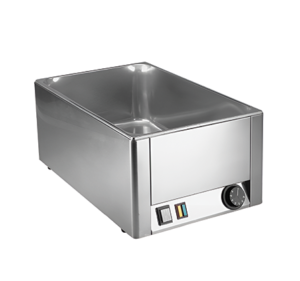Description
Fluidotherapy® – dry heat therapy Double Extremity Unit
• Fluidization causes finely divided particles to acquire the characteristics of fluid. “Evidence-Based Guide to Therapeutic Physical Agents”.
• So how does this work? Fluidotherapy is a dry thermal physical agent that transfers its energy (i.e. heat) to soft tissues by forced convection. “Evidence-Based Guide to Therapeutic Physical Agents”.
• What is forced convection? It is defined as the process of heat transfer through the forced movements of heated air and Cellex (made of natural cellulose) particles in the chamber, which together are circulated around the extremity being treated. “Evidence-Based Guide to Therapeutic Physical Agents”.
• So what is Fluidotherapy? It is defined as: “A modality of dry heat that uses a suspended air stream with the properties of a liquid. It simultaneously performs the functions of applied heat, massage, sensory stimulation, levitation and pressure oscillations”. “Mosby’s Dictionary of Medicine, Nursing & Allied Health”.
• Dry Heat Therapy relieves localized pain, increases localized blood circulation, increases range of motion and relieves minor pain and stiffness associated with non rheumatoid arthritis.
Clinical indications
• Relief of local pain
• Management of minor pain and stiffness on non-rheumatoid arthritis
• Increase localized blood circulation
• Management of joint range of motion when combined with exercise
Examples of common applications
• Relief of local pain
• Exercise
• Tissue heating
• Sensory stimulation
• Increased blood flow
• Decreased ROM
• Other conditions where heat is appropriate
Contraindications
• Where cancerous lesions are present in the treatment area
• Where open wounds are present in the treatment area
• When patients are suspected of carrying serious infectious diseases
• Systemic infectious diseases where it is advisable to suppress heat or fevers
• Severe circulatory obstruction disorders (arterial, venous, or lymphatic)
FEATURES
- Dry heat increases circulation and assists in pain relief
- Massaging Action provides warmth, increased local circulation and pain diminishing effects to help increase joint range of motion
- Limb Buoyancy allows patients to freely perform a variety of resistive exercises with increased mobility and decreased pain. The fluidized Cellex particles act like a low viscosity fluid, allowing limbs to be suspended much like in a liquid state.
- Promote tissue healing
- Heat induced vasodilation
- Increases localized blood flow
- Increases cellular metabolism and regeneration of healthy tissue via improved oxygen consumption
- Improves joint range of motion due to increased collagen elasticity Sensory stimulation
- Gentle sensory stimulation of the skin through rubbing of the Cellex® particles against the skin surface
- Stimulates skin mechanoreceptors
- Induces a cutaneous micro massage, helping to decrease pain and increase range of motion
- Air flow and high/low features create an antigravity effect that maintains the limb in a buoyant, elevated position to aid in the movement of fluid and help prevent the build up of edema
- The effectiveness of Fluidotherapy was compared with Hydrotherapy and Paraffin wax treatments by in vivo temperature measurements of the joint capsule and muscles of the hands and feet. Fluidotherapy applied at 118°F resulted in a maximum joint capsule temperature rise of 16.2°F and a 9.5°F rise in muscle temperature. This was compared to a 13.5°F and 8.1°F rise in temperature, respectively for Paraffin wax treatments. Lastly, Hydrotherapy bath applied at 102°F resulted in only a 10.8°F rise in joint capsule temperature and 7.7°F rise in muscle temperature. “Comparison of In Vivo Temperature Produced by Hydrotherapy, Paraffin Wax and Fluidotherapy.” Borrell RM, Parker R, Henley EJ, Masley D, Repinecz
- easurements of time integrated heat absorption by a hand immersed in a Fluidotherapy unit at 120°F, a Whirlpool at 105.2°F and a Paraffin wax bath at 126°F show the average heat absorption to be 17.2, 5.6 and 4.8 BTU respectively during a 15 minute treatment. “Fluidotherapy: Evaluation of a New Heat Modality” Borrell RM, Henley EJ, Ho P, Hubbell MK



